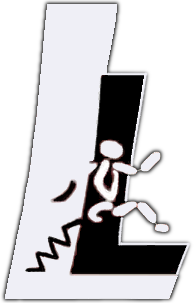| Both sides previous revision
Previous revision
|
|
home [2018/06/19 16:04]
Maziar Sharbafi [Pick of the month - Compliant ankle function results in landing-take off asymmetry in legged locomotion.] |
home [2019/02/18 11:48] (current)
Maziar Sharbafi [Pick of the month - Workshop in BioRob 2018: Novel bioinspired actuator designs for robotics (BioAct).] |
| ===== NEWS ===== | ===== NEWS ===== |
| |
| ==== Pick of the month - Workshop in BioRob 2018: Novel bioinspired actuator designs for robotics (BioAct). ==== | ==== Pick of the month - Concerted control concept in locomotion published in IEEE Transactions on Medical Robotics and Bionics ==== |
| |
| {{ :robokids-bleu-1.jpg?400|}} | |
| |
| Together with colleagues from Vrije Universiteit Brussel and Universität Stuttgart, we have organized a workshop in [[https://www.biorob2018.org/|BioRob 2018 Conference]] on August 26th. This workshop is arranged through goals of [[projects:projects_epa| EPA project]] and [[https://pearres.wordpress.com/|PEAR]]. | {{ :fig_2.png?nolink&200|}} {{ :fig_1a.png?nolink&200|}} |
| |
| **Abstract:** Through evolution, muscles have been optimized to generate and fine-tune motions. They provide highly versatile force sources, i.e., they have an extremely low impedance (perfectly back-drivable), provide functional damping and low stiction. Although their bandwidth is limited, it is sufficient for even highly dynamic human/animal locomotion. Some biological principles can be applied to robotics, e.g., the addition of compliance to traditional rigid actuators. Elastic actuators can increase safety in human-robot interaction, improve energy efficiency, reduce impacts and augment performance in dynamic tasks. While such actuators have been researched extensively over the past two decades, there are still various open questions. These relate to the fundamental properties mentioned above, but also to their implementation and control as well as the integration of their hard- and software. Elastic actuators have been applied in wearable robotic devices, rehabilitation robots and humanoid robots. In the last years, bio-inspired approaches have brought the capabilities of elastic actuators closer to those of the human muscle, e.g., by introducing redundancy to mimic the muscle fibre recruitment. Another level of redundancy can be achieved by employing mono- and bi-articular actuators to achieve designs with increased robustness and simplified control. We plan to divide the workshop in four sessions comprising three talks of around 20 minutes. At the end of each second session, there will be an extensive discussion (around 45 minutes) between participants and speakers of the two sessions. There will be live demonstrations during the talks and in the subsequent discussion. Besides the invited talks and discussion, the organizers will call for posters to be presented at the workshop. \\ | A new concept termed concerted control is introduced in our recently published paper in the //IEEE Transactions on Medical Robotics and Bionics// journal titled [[https://doi.org/10.1109/TMRB.2019.2895891|Concerted control of stance and balance locomotor subfunctions -Leg force as a conductor]]. |
| |
| \\ | |
| Click [[Home:BioAct|BioAct Workshop]] for more information. | **Abstract:** |
| | |
| | In human locomotion, the complex structure of the human body is controlled such that conceptual models (e.g., the spring-loaded-inverted-pendulum model) can describe the significant features. This suggests that the interplay of the complex control and musculoskeletal systems projects into a low-dimensional space to perform different movements. Such simplification can involve splitting the task into different modular control subproblems (locomotor subfunctions) that can be solved individually. Here, we asked how two locomotor subfunctions, namely stance, and balance, could be coordinated to generate repeatable and robust motor commands. We developed a simple neuromechanical hopping model, based on decoupling axial and perpendicular leg forces. For this, bouncing behaviors and trunk posture control can be addressed by a knee extensor muscle and biarticular thigh muscles, respectively. We suggest utilizing the leg force feedback as interplay among environment, body mechanics, and sensory control to synchronize the decoupled subfunctions. We evaluated this approach in push recovery, attenuating ground drop perturbations and by investigating its sensitivity to the reflex gain as the control parameter. Leg force feedback can improve the robustness of hopping by generating rhythmic hopping patterns. Such a parsimony model-based control concept could simplify controlling assistive devices, such as exoskeletons and prostheses. |
| | |
| | **Keywords:** Locomotor subfunction, positive force feedback, reflex control, sensor-motor map. |
| |
| |
| |
| [[publications:publications_podcasts_pick_of_the_month|Read previous news...]] | [[publications:publications_podcasts_pick_of_the_month|Read previous news...]] |
| | |
| |
| |




